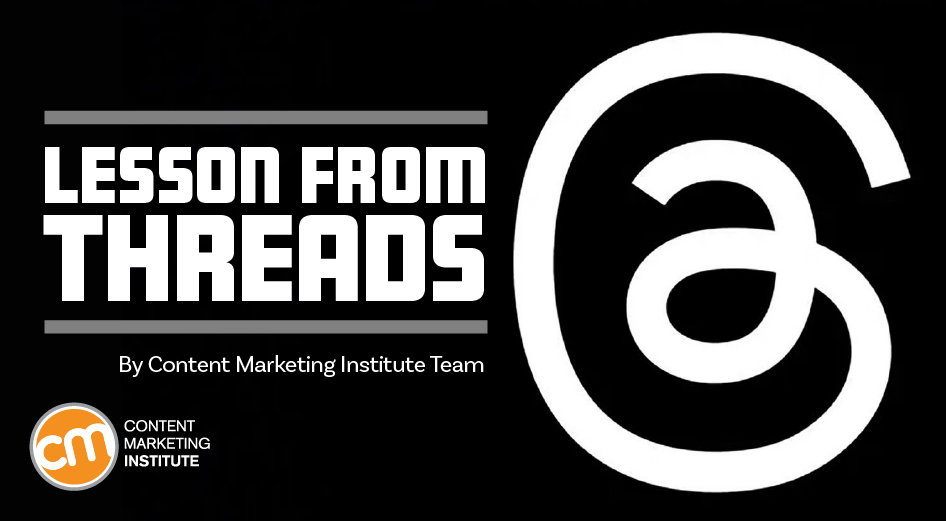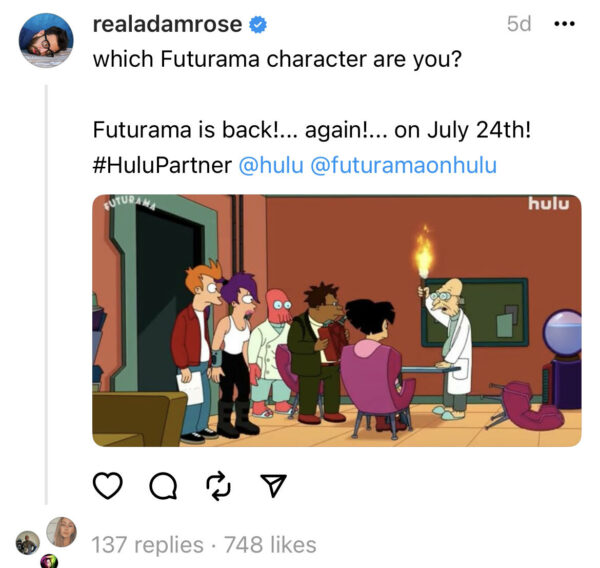MARKETING
Meta Threads’ Rapid Rise Proves the Power of an Owned Audience

Meta spins its new social media network Threads as a close-knit community. But it’s definitely not a small community, given over 100 million people joined it in less than a week.
Let’s put that in perspective. The web took almost seven years to reach that number. Twitter took five years. Instagram did it in 2.5 years, while TikTok took nine months. ChatGPT? It achieved the number in two months.
Do we detect a pattern?
CMI’s chief strategy advisor Robert Rose has some thoughts on that in this week’s CMI News video. Watch it below, or keep reading for the highlights:
Of course, Meta’s Threads has something those others do not. Instagram’s over 2 billion users needed only to say “yes,” and they would have an account on Threads. That ostensibly removed every bit of sign-up friction.
@Meta’s Threads app had an audience advantage. @Instagram’s 2 billion users only needed to say yes to get an account, says @CMIContent @Robert_Rose. Click To Tweet
The real test of Threads isn’t the number of accounts. It’s the number of active users on the platform. Can Threads achieve exponential success to match its record-breaking signups? It’s way too early to tell anything.
Monetizing Threads
Meta has said it doesn’t plan to sell advertising on Threads through the end of this year, but reports indicate it’s already pitching it to potential advertisers. As detailed in this Ad Age article, Meta emphasizes controls, such as brand safety and community standards, in its pitches as it does for Instagram advertising.
In a little-covered report earlier this spring, Meta already introduced advertising controls on Facebook and Instagram that rely more on AI to work behind the scenes of ad placement and comply with the Global Alliance for Responsible Media.
“Incorporating those AI-centered controls would make total sense for Threads because they already exist. And it’s even easier with Threads because it’s text-based data that they can use to create that safer space,” Robert says.
But will Meta create different contextual ad placements with Threads?
Though touted as a Twitter alternative, Threads operates more like TikTok, where users don’t only see content from their followers or following. They don’t even have that choice. A Threads feed is singular based on an algorithm, much like how TikTok delivers content.
Content creators already use Threads for organic ads and sponsored content placement. In the first-ever paid sponsorship on the platform, Adam Rose (no relation to Robert) posted a thread promoting the TV show Futurama with the label “Hulu Partner.”

You can bet on more of that coming down the road.
“Even though Meta has stated that they will wait until 2024 before they offer up ads on the platform, I think Meta could wait longer to – or never – monetize the platform through advertising,” Robert says.
Instead, he says, Meta could use Threads as a loyalty play for Instagram users and benefit from the heaps of data it gathers.
@Meta shouldn’t monetize Threads. Instead, turn it into a loyalty play for @Instagram users, says @Robert_Rose via @CMIContent. Click To Tweet
The real lesson from Threads
But what’s the biggest aha moment about Threads?
Robert says it’s the power of an engaged audience.
Threads got 100 million users on a new platform in a week because Instagram had started with 2.3 billion users the week before. It turned this quote from Richard Branson, the founder of Virgin Atlantic, on its head: “If you want to become a millionaire, start with a billion dollars and launch a new airline.”
That’s the benefit you gain with a subscribed, owned audience.
If you have 25,000 engaged email subscribers who like what you do, it is exponentially easier to launch a new podcast or digital content product. All your existing audience needs to do is say yes.
If you have 25,000 email subscribers, launching a new #content product is exponentially easier, says @Robert_Rose via @CMIContent. Click To Tweet
Threads may take a while to catch on and get truly engaged audiences, but it’s another lesson in the power of audience: You’re stronger when you treat your content as business, just like a media company does.
What do you think? Let Robert know on Threads (@RobertRose), or add your comments below.
HANDPICKED RELATED CONTENT:
Cover image by Joseph Kalinowski/Content Marketing Institute

![How AEO Will Impact Your Business's Google Visibility in 2026 Why Your Small Business’s Google Visibility in 2026 Depends on AEO [Webinar]](https://articles.entireweb.com/wp-content/uploads/2026/01/How-AEO-Will-Impact-Your-Businesss-Google-Visibility-in-2026-400x240.png)
![How AEO Will Impact Your Business's Google Visibility in 2026 Why Your Small Business’s Google Visibility in 2026 Depends on AEO [Webinar]](https://articles.entireweb.com/wp-content/uploads/2026/01/How-AEO-Will-Impact-Your-Businesss-Google-Visibility-in-2026-80x80.png)















